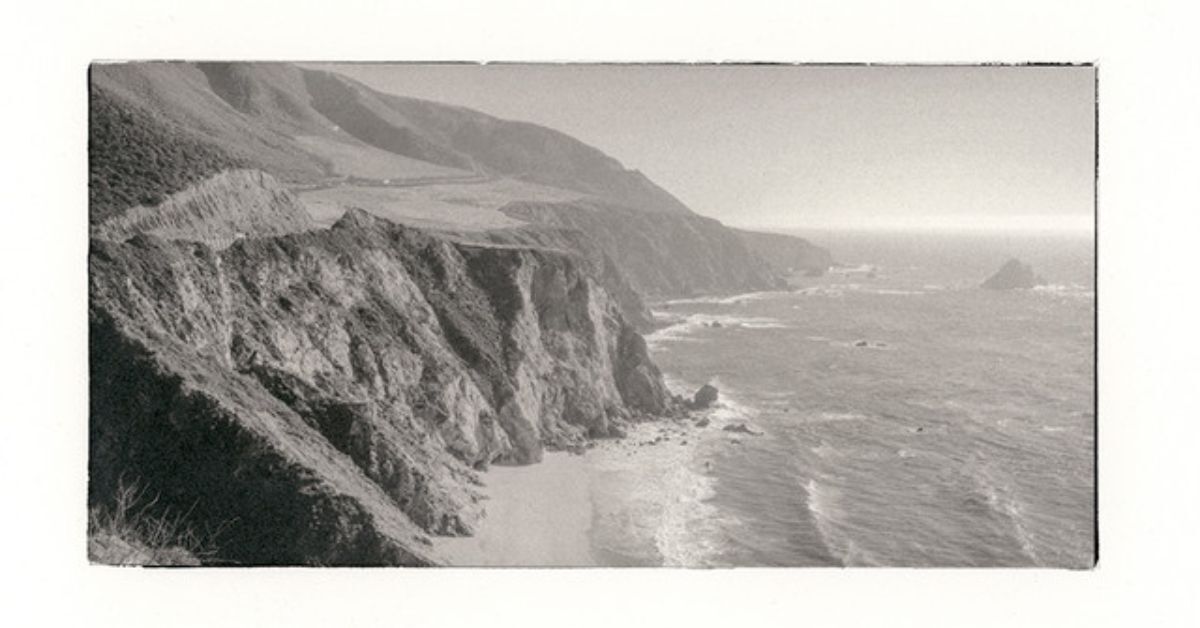Color photography allows us to capture the world as we see it, but a black-and-white aesthetic can sometimes depict the world through a more subversive or symbolic way. This method can capture how the world feels rather than how we perceive it in a purely visual sense. Removing color distills a scene to its fundamental elements of light, shadow, texture, and form.
For art enthusiasts, the allure of black and white lies in this very reduction. It is an art form that transcends fleeting trends and speaks a universal language of emotion and structure.
More specifically, there’s a timeless appeal of black-and-white paper prints that allows us to transform a digital image into a lasting artifact. These pieces create a more intimate and contemplative experience and encourage viewers to develop a deeper connection with the artist’s vision and the subject material. Let’s explore why this is in more detail below.
The Emotional Resonance of Monochrome
The absence of color in a photograph often heightens its emotional impact. By stripping away the literal representation of a scene, black-and-white imagery taps into a more abstract and universal realm of feeling. Reverting a piece to its basic components makes it easier for viewers to experience joy, sorrow, contemplation, and nostalgia with more drama and intensity.
The stark contrast between light and shadow can symbolize a conflict or a moment of clarity, while soft, muted grays can evoke tranquility or melancholy. This emotional directness is one of the key reasons why monochrome prints continue to hold such a powerful place in the world of fine art. They communicate with a raw honesty that color can sometimes obscure, creating a direct line between the subject, the artist, and the observer.
The Focus on Composition and Form
By removing color from a piece, we get a stronger emphasis on the structural elements that make up the subject material, and composition becomes more important. The photographer must rely on lines, shapes, patterns, and the arrangement of elements within the frame to create a compelling and balanced image. This emphasis on form allows for a more graphic and architectural approach to photography.
Viewers can use this lack of color to appreciate the geometry of a scene more greatly, whether it’s the sweeping curves in a landscape or the firm lines in a cityscape. This focus on the fundamental building blocks of an image is what gives black-and-white photography its timeless and classic quality.
The Play of Light and Shadow
Photography is the art of capturing light, which is more important than ever when it comes to black-and-white pieces. Light and shadow are not just elements within the image; they become the subjects themselves. The way light falls across a surface creates highlights and deep shadows, which define the mood, texture, and depth of a black-and-white photograph.
Photography gives artists a chance to sculpt with light and use it to reveal form by creating a powerful sense of three-dimensionality on a two-dimensional surface. Properly executed monochromatic prints are an excellent way for photographers to show off their mastery of controlling and capturing light and shadow together.

Revealing Texture and Detail
Part of the timeless appeal of black-and-white paper prints is that the texture of the paper helps capture or convey additional information beyond the photograph itself. Even a smooth, matte finish can showcase the rough surface of stone, the smooth grain of wood, the delicate weave of fabric, or the weathered lines on a person’s face. Prints can render these elements with amazing clarity and quality through the absence of color.
The subtle variations in tone and contrast allow the viewer to almost feel the surfaces depicted in the photograph. This heightened sense of texture adds a layer of realism and intimacy to the image, drawing the viewer deeper into the scene and creating a more immersive experience. It is a celebration of the small details that give the world its richness and complexity.
The Narrative Power of Abstraction
Black-and-white photography inherently possesses a level of abstraction. By presenting a version of reality that is different from our everyday perception, it encourages the viewer to engage their imagination and participate in the creation of meaning. This abstraction can be a powerful narrative tool.
Photographers can imbue a simple scene with a greater sense of mystery, ambiguity, or symbolic weight. The purpose of the photograph becomes less about a traditional depiction and more about presenting the subject as a question, which invites introspection and personal connection.
The Quality of Timelessness
One of the most defining characteristics of black-and-white photography is its sense of timelessness. Color photography can often date an image, as color palettes and processing styles fall in and out of fashion. Monochrome images, however, seem to exist outside of a specific time and place.
There’s an enduring quality to monochromatic pieces. A black-and-white photograph of a landscape from the 1940s can feel as immediate and relevant as one taken a week ago. This timelessness allows the viewer to connect with the essential humanity of the subject, free from the cultural and historical markers that color can sometimes impose.
The Importance of the Physical Print
In an increasingly digital world, the physical, tangible nature of a paper print offers a unique and valuable experience. Holding a print in your hands, feeling the paper’s weight, and observing the ink’s subtle details help you form a connection that images on a screen can never truly replicate.
A paper print is an object of art in its own right—a final, deliberate expression of the artist’s vision. The choice of paper, the printing process, and the final presentation are all crucial parts of the artistic statement. Physicality allows viewers to have a slower, more contemplative viewing experience and build a deeper appreciation of the image and the craft behind it.

A Lasting Artistic Statement
Black-and-white paper prints represent more than just a stylistic choice; they embody a rich artistic tradition that values substance over surface. They challenge both the artist and the viewer to engage with the world in a more deliberate and thoughtful way. Ultimately, the power of a monochrome image is its ability to distill a moment to its emotional and structural core, creating a work of art that is both immediate and timeless.
At Wonderwall Studio, we believe in bringing the enduring beauty of photography and art into your space. Explore our exquisite collection of art reproduction prints, crafted with the utmost attention to quality and detail. Transform your home or office with pieces that inspire and evoke emotion—discover your next masterpiece today.



